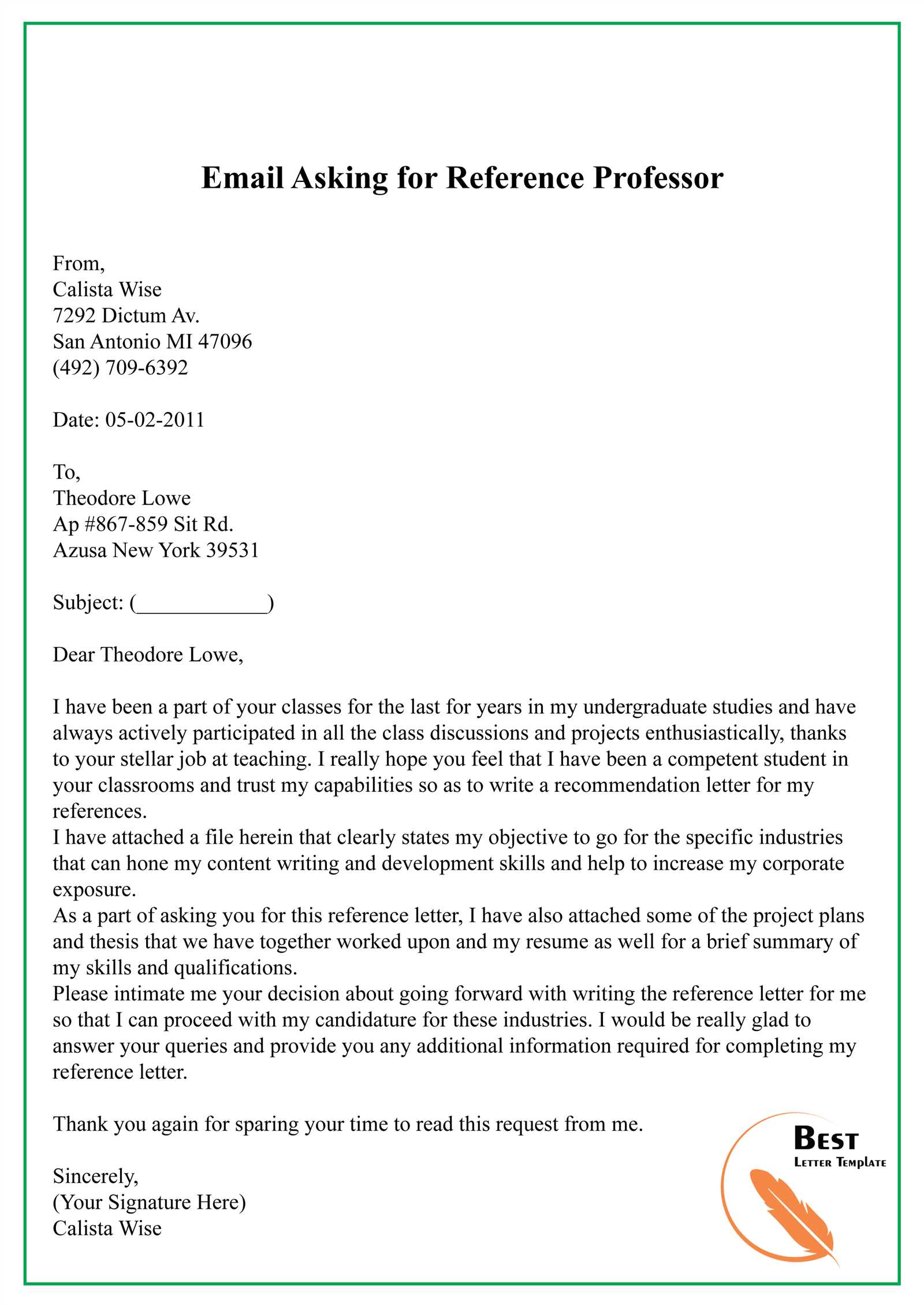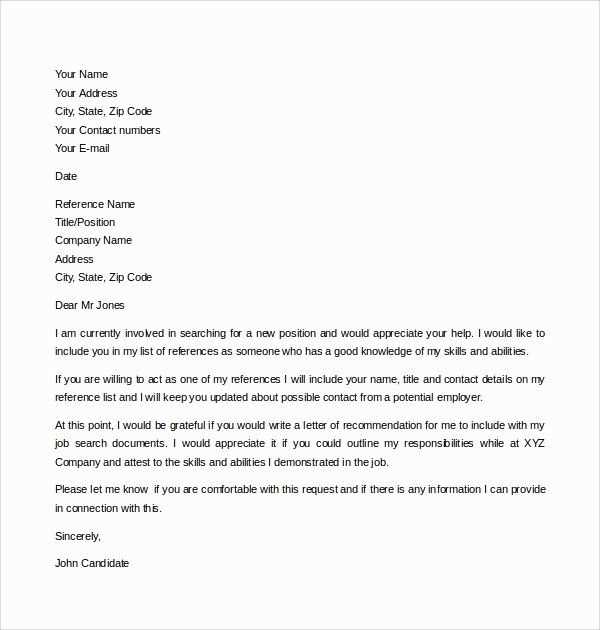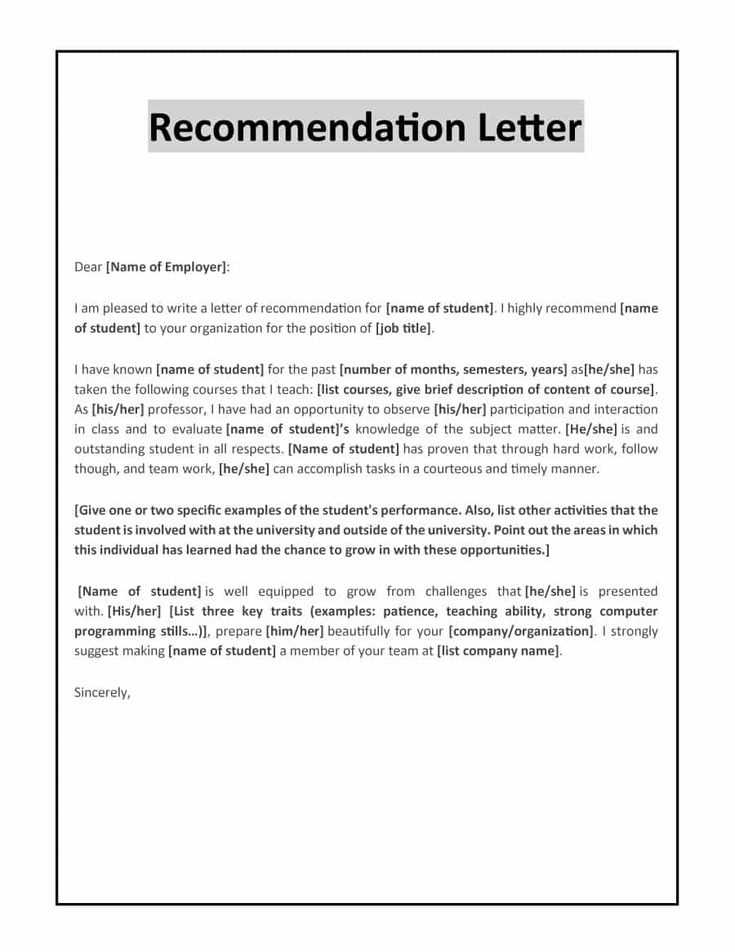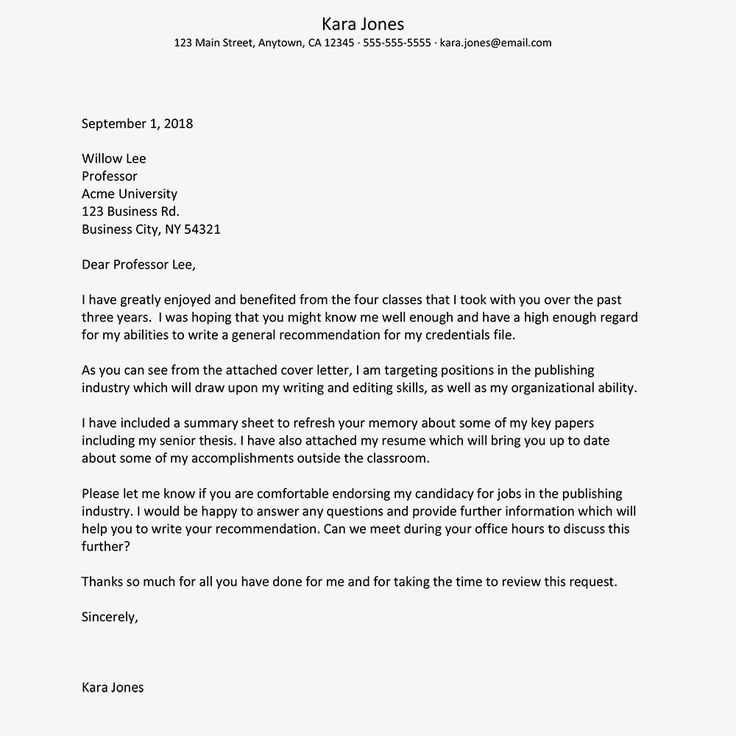Email template asking for letter of recommendation

Make your request clear and direct. Begin by addressing the person you are reaching out to, using a friendly yet professional tone. State your purpose right away, so they know exactly why you are contacting them.
Provide context for your request. Mention the program, job, or opportunity you are applying for, and explain why you believe their recommendation would be valuable. Highlight specific skills or experiences you shared that could be relevant to their recommendation.
Be respectful of their time. Acknowledge that writing a letter may take time and express gratitude for considering your request. Offering a deadline or timeframe can help them plan, but don’t pressure them.
End with a polite closing, offering to provide any additional details or supporting materials if needed. A clear and professional sign-off leaves a positive impression.
Email Template Asking for Letter of Recommendation
Subject: Request for Letter of Recommendation
Dear [Professor’s/Dr.’s Name],
I hope this message finds you well. I am writing to kindly ask if you would consider writing me a letter of recommendation for [specific purpose, e.g., graduate school application, job opportunity, scholarship]. Having worked closely with you during [mention the relevant course/project/research], I believe your insight into my abilities and dedication would provide valuable perspective for my application.
Details to Include
To assist you in crafting the letter, here are some key points to consider:
- My academic performance in [specific courses or projects you worked on].
- Specific skills or qualities you observed that would make me a strong candidate for this opportunity.
- Any notable achievements or contributions I made in your class or during our work together.
Deadline and Submission Instructions
The letter is due by [deadline]. If you need any additional information or details, feel free to reach out to me. Thank you for considering my request, and I appreciate your time and support.
Sincerely,
[Your Full Name]
[Your Contact Information]
How to Address the Recipient Professionally
Use the recipient’s formal title and full name. Begin the email with “Dear” followed by their title (Mr., Dr., Professor, etc.) and last name. If you’re unsure of the recipient’s title, use their full name without a title. In cases where the person holds a high-ranking position, using their professional title is a respectful and safe choice.
Ensure you check the spelling of their name carefully. Addressing someone with the wrong name can create a negative impression. If you’re writing to a group, use a collective greeting such as “Dear Members of the Committee” or “Dear Hiring Manager” instead of generic terms like “To Whom It May Concern.”
| Recipient Type | Proper Salutation |
|---|---|
| Professor | Dear Professor [Last Name] |
| Doctor | Dear Dr. [Last Name] |
| Mr. or Mrs. | Dear Mr./Mrs. [Last Name] |
| Group | Dear [Group Name or Title] |
If the recipient prefers a more casual approach and has indicated this in previous communication, you may adjust accordingly, but always prioritize professionalism in formal requests such as a letter of recommendation.
Crafting a Clear Request for a Letter
Be direct and specific in your request. Clearly state what you need, and provide enough context for the person to understand why you’re asking. Here’s how to do it:
- State your request upfront–mention that you’re seeking a letter of recommendation and explain why you’re reaching out to them specifically.
- Give a brief background–help the person recall your interactions and achievements that are relevant to the recommendation.
- Provide details–highlight what the letter should focus on (skills, experiences, specific qualities) and if there’s a particular format or submission method to follow.
- Offer flexibility–make sure to let the person know you understand if they’re unable to write the letter or if they need more information from you.
- Set a reasonable deadline–mention when you need the letter, but be mindful of their time.
Conclude with gratitude, acknowledging the person’s help and time.
Providing Relevant Details About Your Achievements
Be specific about the accomplishments that directly relate to the opportunity you are seeking the recommendation for. Highlight your most recent and impactful work, especially achievements that demonstrate your skills and growth.
Highlight Key Projects and Results

Include concrete examples, such as the successful completion of a major project, measurable improvements you contributed to, or initiatives you led. Mention any recognition or awards received, as these add weight to your request. For example, “I led a team that increased sales by 20% in six months” provides a clear and quantifiable achievement that your recommender can reference.
Include Relevant Skills and Strengths
Focus on the skills that align with the recommendation’s purpose. If you’re applying for a position in project management, mention leadership, time management, or communication skills. Avoid listing generic qualities–be specific about how these skills helped you achieve tangible outcomes.
By offering these details, you make it easier for the recommender to highlight your key strengths in a way that aligns with the opportunity you are pursuing.
Explaining Why You Chose the Recipient

I’ve chosen you because of the direct experience we’ve shared working on various projects. Your insight into my skills and work ethic makes you uniquely qualified to provide a well-rounded perspective. Your feedback has always been constructive, and I deeply value your opinion on my growth and capabilities. You’ve witnessed my development firsthand, making you the ideal person to offer an honest and thoughtful recommendation. Your support has been pivotal in shaping my professional path, which is why I believe your recommendation will hold great weight.
Setting a Deadline and Offering Assistance
Set a specific deadline for the letter of recommendation. Ensure the timeframe allows the person enough time to write a thoughtful and detailed letter. A good window is typically 2–3 weeks. This approach helps you avoid last-minute delays and gives your recommender time to reflect on your strengths.
Clear Communication
Be clear about the date when you need the letter. For example, specify that you need it by a certain date, and mention the submission process if relevant. This clarity reduces the chance of confusion and ensures everything is ready on time.
Offer Help
Offer assistance with the process. Provide any information that can make the writing easier, such as your resume, list of achievements, or even specific points you’d like them to highlight. This gesture shows appreciation and makes it easier for them to help you.
Polite Follow-Up After Sending the Request

If you haven’t received a response after your initial request, send a polite follow-up email. Keep the tone respectful and concise. Acknowledge that the person might be busy, and express appreciation for their time.
Begin with a friendly greeting and remind the person of your previous email. Be specific about the deadline or reason you’re following up, but avoid sounding impatient or demanding. For example, mention how much you would appreciate their input in helping you with your application or job search.
Reassure them that you understand they have a lot of commitments and that you’re grateful for any time they can spare. Keep the message brief to respect their time. Close by thanking them again for considering your request, and offer any additional details if needed.